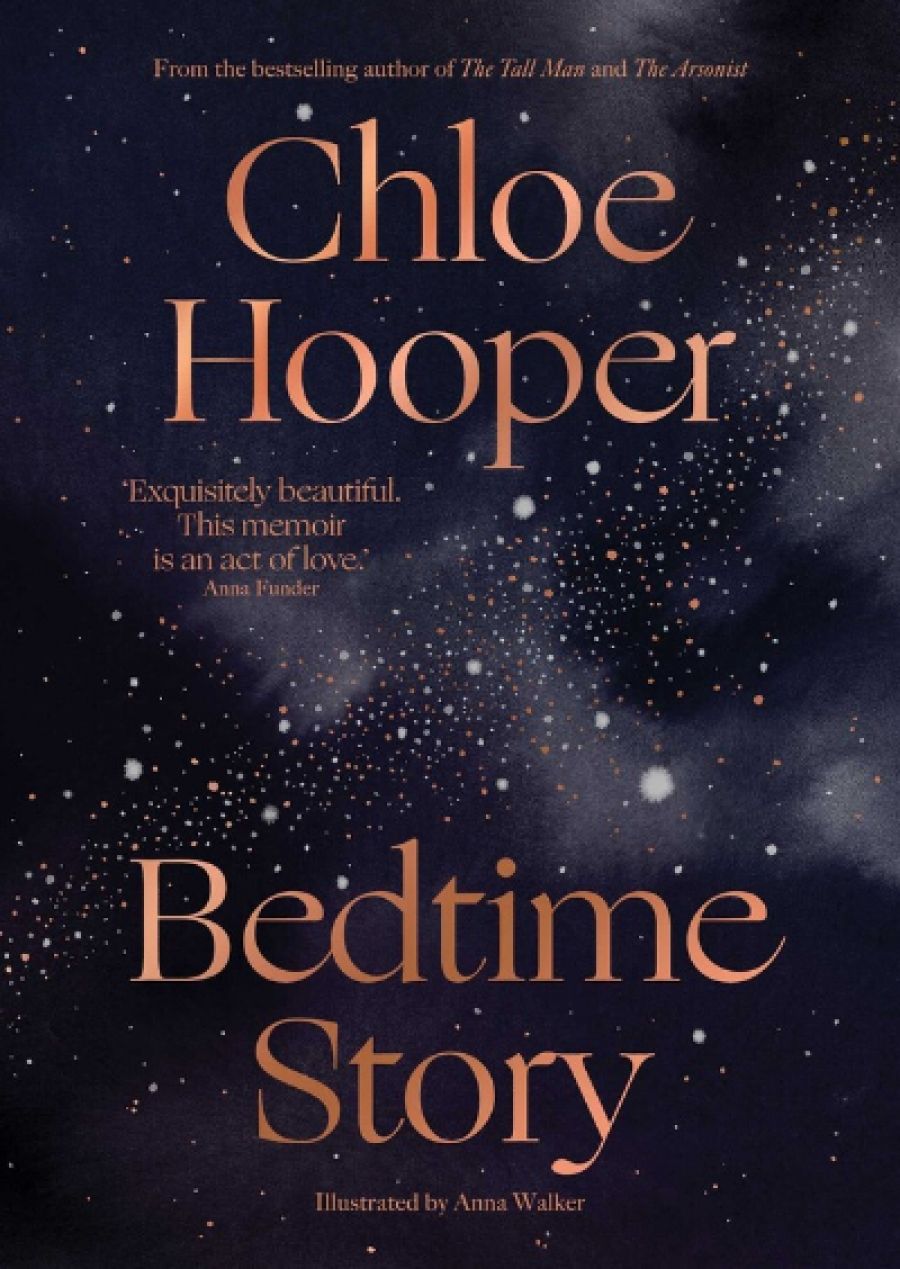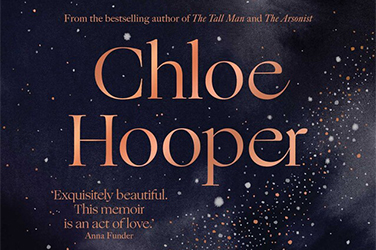
- Free Article: No
- Contents Category: Memoir
- Review Article: Yes
- Article Title: Enemy of the anodyne
- Article Subtitle: Chloe Hooper’s search for the unsentimental
- Online Only: No
- Custom Highlight Text:
A father sits on a couch that is set between the beds of his young sons, who must be eased into sleep with a story. The scene is illuminated by a lamp in the shape of the globe, which is as it should be, for he shows them his world through the simple patterns of these stories: his cherishing of the natural world; his insight into happy reversals of fortune; his humour. The father’s stories are spellbinding, reassuring the children and also their mother, who tells herself that no harm can come to this man in the middle of a tale. She is reminded of the old motif from the Thousand and One Nights, where the storyteller wards off death with a gripping narration.
- Article Hero Image (920px wide):

- Article Hero Image Caption: Chloe Hooper (photograph by Susan Gordon-Brown)
- Alt Tag (Article Hero Image): Chloe Hooper (photograph by Susan Gordon-Brown)
- Featured Image (400px * 250px):

- Alt Tag (Featured Image): Brenda Walker reviews 'Bedtime Story' by Chloe Hooper
- Book 1 Title: Bedtime Story
- Book 1 Biblio: Simon & Schuster, $34.99 pb, 243 pp
- Book 1 Readings Link: booktopia.kh4ffx.net/2re1PG
Both parents are writers, but unlike the father, the mother doesn’t improvise bedtime stories. In any case, she is preoccupied with an adult story, one that threatens the family with devastation: the loss of the kind father who, unbeknown to the children, is seriously ill. This is a terrifying story, but it must be made fit for children before illness overtakes the family. The older child in particular must be prepared, and the book is addressed to him. He must be told, but how might this be done?
This is the situation at the heart of Chloe Hooper’s memoir Bedtime Story, an account of the threat of death and change in her closely woven household, and an exploration of children’s literature that might – or might not – offer help and direction. The book is illustrated with shadowy images that become more distinct as it draws to a close.
Hooper has written two novels: A Child’s Book of True Crime (2002) and The Engagement (2012). Both are bleakly funny, sophisticated, and chilling depictions of bright young women who wrongly imagine themselves to be in command of humiliating, even dangerous sexual situations. Both are anti-romances in which young women try on personas – the ingénue, the call girl – in relationships with men whose games are more calculating and callous than these women could possibly imagine. Both novels chart a progression from playfulness to entrapment, and are implicated in broader patterns of Australian colonial history in this trajectory.
Hooper’s first non-fiction book, The Tall Man (2008), is about the legal and political manoeuvres that followed the 2004 death in custody of Cameron Domadgee on Palm Island. It is a devastating insight into violence and dispossession. Her second non-fiction book, The Arsonist (2019), examines culpability for the 2009 Black Saturday fires in Victoria.
Bedtime Story is a highly personal, intimate work that takes us into her household and its domestic routines, its joys and substantial fears. It is also a broad discussion of spoken and written storytelling, with a particular critique of anodyne children’s books. This may seem like an unexpected departure from her previous work, but the origins of Bedtime Story are visible in A Child’s Book of True Crime, where a young schoolteacher has a fantasy of writing a ‘goodbye to childhood’ book for her most precocious pupil. Here, too, is a rejection of sentimental storytelling: ‘As soon as one started talking honestly to children, it became clear their literature was the true opiate of the masses. See the sun, blue-eyed and smiling; step inside a music box to hear the old melody of goo-goo, gaa-gaa.’ The idea of creating a story for a specific child when published stories fail has been with Hooper for a long time.
The child in Bedtime Story is Hooper’s older son, who is old enough to register the full implications of his father’s illness. Hooper writes brilliantly about this irrepressible boy, who has a winning range of distracting tactics: ‘You throw your underpants onto the ceiling fan and retrieve them by turning it on high.’ The small
library of picture books in the children’s room seems particularly inadequate for this child – in them ‘life is reduced to its essential elements. The sun is a yellow ball in the sky. The road is a black ribbon leading to green … Each night people are sad then happy. They get lost and found, and return to their houses that have a front door between two windows.’ Hooper has to find a way of telling her son that the time may come when his father doesn’t come home.
The search for this story takes her to canonical literature for children and, at times, to the lives of the writers themselves – the Brothers Grimm, Kenneth Grahame, J.R.R. Tolkien, C.S. Lewis, Antoine de Saint-Exupéry, Roald Dahl, and others. Surveying the wares in a bookshop, she comments on the gap between the stories we offer to children and the reality of the world they inhabit: ‘there are … sea-faring adventures, even as the oceans are filling with plastic. Or tales of enchanted woods, abounding with toffee and fairies, while we keep erasing our forests.’ If, as she tells us, ‘Storytelling’s subject and purpose is survival’, the stories we tell children may have to change. In searching for a way to prepare her son for the possibility of losing his father, she opens a conversation about preparing all children for the great losses of the present, such as the extinction crisis, and the planetary losses that are likely in their lifetimes.
This is all interwoven with the domestic story of her household: the chopping of vegetables, the nestlings in the garden, conversations with other parents, and the patient resilience required of both parents as medical information and procedures are steadily assimilated and endured. For Hooper, the father is a kind of Odysseus, embarked on a fearful journey, and everyone must wait and hope for his return. The reader feels this acutely – not only out of sympathy for this family, but because Hooper’s partner is the writer Don Watson, who is appreciated by his large body of readers. One of the pleasures of this book is his bedtime stories for his sons – neat and plain and completely charming. I wish he would publish a collection.
Chloe Hooper has written a sombre, thoughtful book, but sometimes the sombre is necessary. Nobody, adult or child, lives in a world of primary colours where happiness is assured. Literature and life stories do help us to survive.


Comments powered by CComment